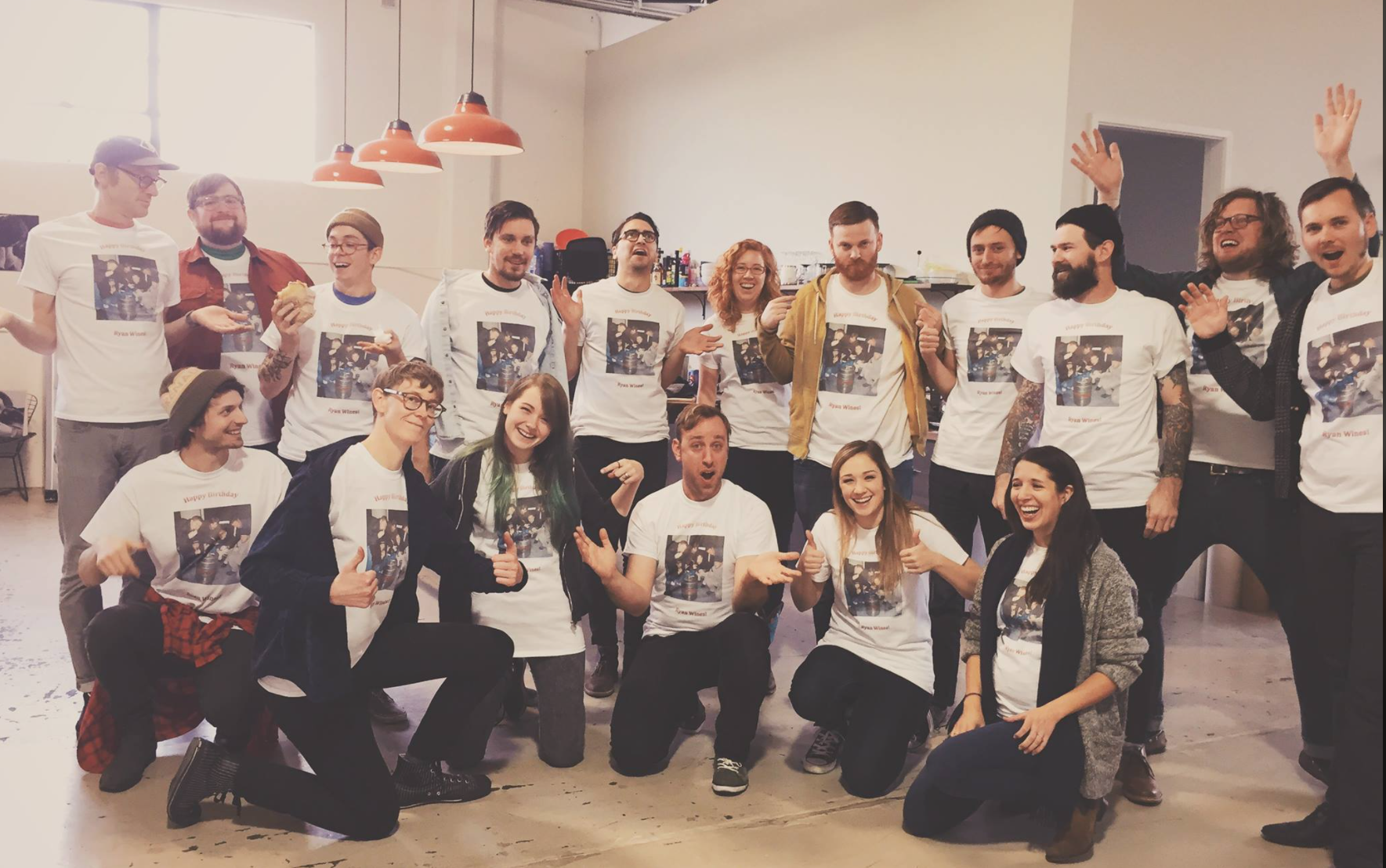My business is headquartered in Portland, Oregon, where about 73% of the population identifies as white. Statistics in Portland’s business community are more staggering, where higher paying and more sought after roles lack diversity. A cliche excuse I often hear expressed by local business leaders is applicant pools are mostly white. My answer: Yes, status quos (and systemic power structures) are hard to break.
After five years, Marmoset is now 61% non-male and 34% BIPOC, with even greater diversity in leadership and highest paid positions. While systemic white power structures run deep in Portland, my story is proof that a diverse, equitable and inclusive workforce is possible.
I’ve learned some lessons along the way. And I hope by sharing them here, framed within my own journey, it might help other leaders find their way.
Lesson #1: Know why you’re doing the work.
Why do you want to do DEI work? What does it mean to you and what are you looking to achieve? While it can evolve over time, first and foremost always know why you’re doing the work.
My why is I love my community and I’m committed to making it better. I’m here to change the way the Portland business community shows up, change the way it looks and feels, and how it’s experienced by all.
My why is to dismantle systemic racism and destroy a 2000+ year patriarchy that’s holding back our community, our industry, and so much more. I’m committed to leveling the playing field and creating more equitable opportunities at my company and in my industry.
Lesson #2: There are no shortcuts. DEI work takes time.
There have been moments I wanted to do all the work as quickly as possible. It’s uncomfortable having so many eyes on me, wondering why the leadership team is so white and what’s taking so long. Thankfully, I’ve learned from more experienced folks to take the long road to get it right. Doing the work takes a long-term vision, discipline, and more time than you’d think.
Lesson #3: Assemble a trusted team of advisors.
Five years ago I sought out two people to help me start learning and developing my long-term vision on DEI. One is a business leader who started his equity work a few years prior. Thank you, Ryan Buchanan. The other is a leading DEI expert whose candor, brutal honesty, and unparalleled professional experience has given me more understanding than I’ve found anywhere else. Thank you, Serilda Summers-McGee. I’ve added more peer mentors and experts along the way.
Having a qualified, trusted team to advise and walk alongside you is especially helpful when the work gets hard and uncomfortable. Peer mentors are there to guide you, pick you up, and help you remember why you’re doing the work in the first place. And it’s critically important to differentiate between who’s actually doing the work with you vs. who’s throwing criticism down on you from the cheap seats. The “Man in the Arena” speech can be helpful in these moments.
Lesson #4: Develop a long-term roadmap and define success.
There’s no finish line with DEI work. There’s no consultant or workshop that checks all the boxes. It’s a never-ending commitment to learning, transformation, and impact. It requires a long-term vision and plan, similar to that of a business strategy.
Start by selecting a date 3-5 years out. Paint the picture of what success looks like. The best goals are set to a timeline with specific milestones along the way. Make your plan SMART.
Working with Serilida back in 2015, these were the long-term goals we set:
Achieve diversity representation better than the demographics of our city/community. Knowing Portland is about 27% non-white, we had to do better than that. This was our first major milepost. And to maximize impact, I wanted that representation to be true at every level of my organization, especially the most sought after roles: creative roles and leadership roles.
Increase the diversity (race and gender) of the artists and the music we represent.
Work with more BIPOC and women owned businesses for projects and work where we enlist contractors, advisors, vendors and consultants.
Provide ongoing training and education for leaders and all staff.
Reflecting back on these now, I wish I would’ve made the goals smarter, more measurable and timeline-based. The best goals are always SMART ones.
Once long-term goals are set, work backwards, cutting it up into smaller chunks -- similar to how you might approach a business strategic plan.
Lesson #5: You will fail. And you absolutely must keep going.
This may be the most important lesson of all. This work is hard, and without exception, everyone will misstep and fail from time to time. There’s no avoiding it.
While it pains me to admit, I too have failed. People have suffered systemic racism, bias, and discrimination at my company too. No doubt about it, we have failed some of our people along the way. And despite our failures, we are committed to learning from our mistakes, and getting better as we go.
I also accept the fact that I too have exhibited racist and patricarchical behaviors, and at times I have been part of the problem. I’m working on myself -- working to learn about and process the dark parts of our communities and of our history. It’s impossible to do this kind of work if I’m unable to wrestle with my own identity and dissect my own ego. As they say, acceptance is the first step of recovery.
Lesson #6: Stay focused.
You’re held to higher standards when you commit to doing this work, and will therefore receive more scrutiny and criticism. Learn to receive it. And say thank you.
That said, it’s unfortunate society has devolved to cancel culture, where anonymous critics and disingenuous bystanders so quickly tear people down in a public setting. While I support increased accountability, we can do better than drive-by Yelp reviews for humans.
All the more reason to stay focused on the work. Don’t get distracted by critics, cynics and trolls working against you. If your values, track record and reputation are strong, your community will know that, no matter what’s said about you.
Blind spots
It’s recently come to my attention that communication has been a blind spot for me. To be vulnerable here, talking about DEI within my own company is something I’ve struggled with at times. At my core, I’m a “talk is cheap” sorta person. So until we’ve achieved some pretty big, meaningful results, I wasn’t too keen on talking about it. I never wanted to be the CIS white, privileged CEO guy standing up in front of a bunch of people (smart people!), talking about all of the diversity work I’m doing. So I put my head down and did most of the work solo or alongside just a couple of my colleagues and advisors, mostly working behind the scenes.
Because of my own discomfort in talking more openly about it, I now see and realize I’ve missed some meaningful opportunities for broader dialog, engagement and alignment within my company. The downside of working quietly behind the scenes is my staff didn’t always know what I was upto. It’s possible some didn’t know if our progress was happening by accident or on purpose. Moving forward, I’m learning to embrace the notion that our staff wants to know what I’m upto -- especially on topics of DEI. And ultimately, they need to hear their CEO and leaders are all-in, leading the way.
Impact
Five years into the work, Marmoset’s staff demographics are better than Portland’s by every metric. Eight of our top ten highest paid employees are women. Five out of the top six are BIPOC women. There are no pay gaps at my company. Full stop. And the good news: if we can do this in Portland, Oregon, anyone can do it.
For the people in the back: If we can do this in Portland, Oregon -- anyone can do it.
And for any business leaders out there who may be wondering how DEI impacts the bottom line, know this: Marmoset as a business has never been stronger or healthier than it is today. We’re at our peak right now in nearly every imaginable business metric: cash, resources, profitability, sales, expenses, people, morale and vibes, brand, innovation, momentum and upward trajectory. That said, I buried this fact a little bit because it could be a distracting headline. Doing DEI work to boost the bottom line is shitty… or disingenuous at best. Do it for the right reasons and you can rest assured, the results will follow. Research supports this.
What’s Next?
Because the work is never done, we continue to raise the bar with our long-term goals and plans. Our staff and Marmoset’s DiversiTeam have gradually taken on more of the work, and have developed several new goals and strategies spanning all teams and functions. For instance, we’ve made good strides in terms of the diversity of the artist roster we represent. Currently, one of our goals is improving the diversity (race and gender) of our top royalty earners.
Another important long-term goal for me is to one day replace myself or split my role with someone who doesn’t look like me or think like me. Someone who can bring new ideas, with new expertise and experiences, to help take the company to another place.
I am so grateful our staff has stepped up in big ways over the past couple of years, now much more invested in helping carry the responsibility of DEI with me. I am especially thankful for my colleagues, Nicole Hooper and Jené Etheridge, Marmoset’s DiversiTeam, and many others, for their collaboration and commitment in doing this work.
The work is endless. And yes, it’s all worth it.
RW
Note: An condensed version of this essay was originally published on December 29, 2020 by The Portland Business Journal.
*This is yet another essay in-part inspired by my friends Mario and Chris — please check out their work too. We believe the process of public writing helps us learn, grow and improves our lives too. We call ourselves the Western Writers League and someday we might make hats with a cool logo.







